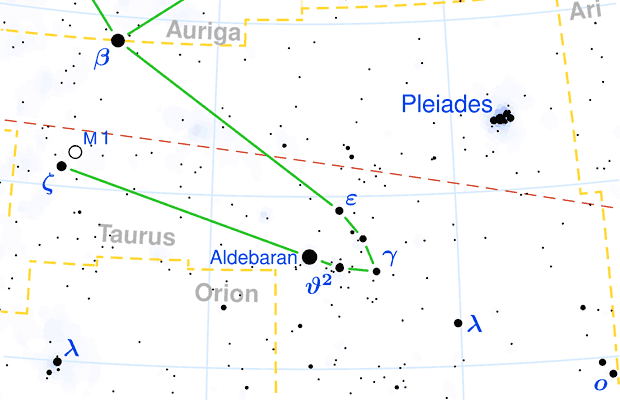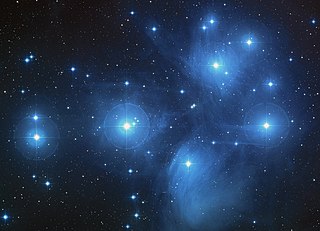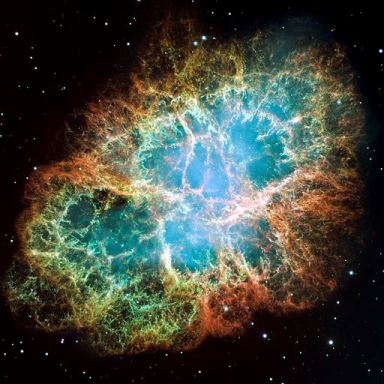The Constellation of Taurus
Taurus is a very prominent constellation in the winter sky. Being one of the signs of the Zodiac it lies on the plane of the ecliptic with the constellations of Aries to its west and Gemini to its east. Taurus is host to a number of interesting features including two of the nearest open clusters to Earth: the Pleiades (M45) and the Hyades which are both naked eye objects. Then there is the first magnitude star Aldebaran which is a red giant and the brightest star in the constellation.
Image credit : Torsten Bronger CC BY-SA3.0 Published in seasky.org
The Pleiades, also known as the Seven Sisters, is a conspicuous object in the night sky with a prominent place in history and mythology. With a radius is about 8 light years Pleiades contains over 1,000 stars. Its stellar population is dominated by young, hot blue stars only a few of of which which can be seen with the naked eye. These stars in the Pleiades are thought to have formed together around 75 – 150 million years ago. It is reported that under ideal observing conditions some nebulosity may be seen around the cluster but under UK skies it requires long exposure astrophotography to reveal a reflection nebula caused by dust reflecting the light of the cluster’s stars. The nebula is a happy coincidence as it is believed now that the cluster just happens to be moving through a dusty region of the interstellar medium. It was once thought that the dust was left over from the formation of the cluster, but it is now accepted that any of the progenitor cloud from which the Pleiades formed would have been dispersed by radiation pressure. The Pleides is a wonderful object in binoculars or telescope, but perhaps the widefield view of binoculars somehow makes the pleiades more impressive.
The Hyades Cluster appears in Taurus where its brightest stars form a “V” shape. At a distance of about 150 light years The Hyades is the nearest star cluster to Earth and is perhaps the moist studied of all open clusters. Its central group of stars is about 10ly in diameter, whilst its outlying members extend to a diameter of 80ly. Aldebaran, the brightest star in the field of the Hyades, is not actually part of the cluster being much closer to us (about 60ly).
Of equal fame is M1, the Crab Nebula. The Crab Nebula can be found in binoculars under dark skies and in ideal observing condition but it is a challenging object and will appear only as a barely perceptible blur. Ideally it needs a moderate size telescope, but with a telescope and CCD camera, a breathtaking level of detail can be revealed. The Crab Nebula is an object of significant historical note. It is a supernova remnant created by a Type II supernova explosion and has been linked to a supernova which was first seen from Earth on July 4, 1054 and which is mentioned in Chinese historical texts. It was bright enough to be observed during the day but the nebula is currently only magnitude 8.4, a supernova remnant.



